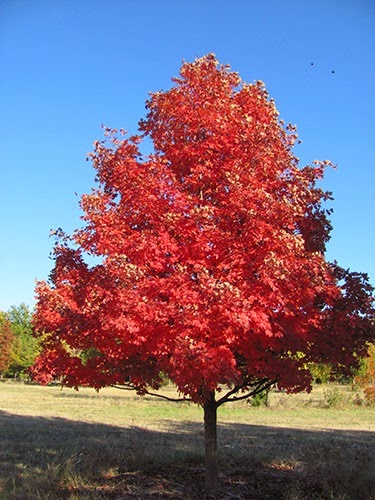Dividing Perennials in Fall
Cassie Homan, Horticulture Agent
 One of my
favorite parts of gardening is dividing plants. It’s so fun and rewarding to
get more plants from your existing flower beds. I was recently able to divide
and move several flowers and wanted to show how simple the process is. My
parents are moving to a new house and leaving behind some beautiful perennials.
Over the holiday weekend I dug up some irises, daylilies, and peonies and
brought them home with me. Fall is a great time to move these plants and get
them established before freezing weather hits.
One of my
favorite parts of gardening is dividing plants. It’s so fun and rewarding to
get more plants from your existing flower beds. I was recently able to divide
and move several flowers and wanted to show how simple the process is. My
parents are moving to a new house and leaving behind some beautiful perennials.
Over the holiday weekend I dug up some irises, daylilies, and peonies and
brought them home with me. Fall is a great time to move these plants and get
them established before freezing weather hits.
 Dividing
irises are very similar to the steps mentioned above for daylilies. Make sure
to discard any small, weak, or woody divisions and the center of the plant if
it is dead or weaker than the outside. Iris roots are technically underground
stems called rhizomes. They grow horizontally at or above ground level. When
dividing, each section should contain a few inches of rhizome and a fan of
leaves.
Dividing
irises are very similar to the steps mentioned above for daylilies. Make sure
to discard any small, weak, or woody divisions and the center of the plant if
it is dead or weaker than the outside. Iris roots are technically underground
stems called rhizomes. They grow horizontally at or above ground level. When
dividing, each section should contain a few inches of rhizome and a fan of
leaves.
If you would like
more details about perennial flowers in your landscape, contact Cassie Homan,
Post Rock District Horticulture Agent, at (785)738-3597 or by email at choman@ksu.edu
 One of my
favorite parts of gardening is dividing plants. It’s so fun and rewarding to
get more plants from your existing flower beds. I was recently able to divide
and move several flowers and wanted to show how simple the process is. My
parents are moving to a new house and leaving behind some beautiful perennials.
Over the holiday weekend I dug up some irises, daylilies, and peonies and
brought them home with me. Fall is a great time to move these plants and get
them established before freezing weather hits.
One of my
favorite parts of gardening is dividing plants. It’s so fun and rewarding to
get more plants from your existing flower beds. I was recently able to divide
and move several flowers and wanted to show how simple the process is. My
parents are moving to a new house and leaving behind some beautiful perennials.
Over the holiday weekend I dug up some irises, daylilies, and peonies and
brought them home with me. Fall is a great time to move these plants and get
them established before freezing weather hits.
Perennials
are great plants because they are relatively low maintenance and come back year
after year. Every three to five years they can be divided to maintain plant
vigor. Perennials that bloom in the spring should be divided in late summer or
early fall.
For daylilies
the division process can be done in a few easy steps. First, dig up the clump of daylilies with a shovel. It works best
to lift large sections at once. Second,
trim the leaves to a height of 6-8 inches. This makes the plant easier to work
with. Next, you want to separate the
clump into smaller clumps. You might want to use a sharp, sterile knife or
spade. Be sure each division has three to five buds for new shoot production. To
keep plants looking full, keep 2-3 plants in one transplant. Lastly, trim a bit off the roots, this
will help with regrowth. Now you are ready to transplant! Choose a sunny
location and dig a hole 2-3 times the size of the root ball of the plant. Space
your plants about 12-18 inches apart, and give them plenty of water.
 Dividing
irises are very similar to the steps mentioned above for daylilies. Make sure
to discard any small, weak, or woody divisions and the center of the plant if
it is dead or weaker than the outside. Iris roots are technically underground
stems called rhizomes. They grow horizontally at or above ground level. When
dividing, each section should contain a few inches of rhizome and a fan of
leaves.
Dividing
irises are very similar to the steps mentioned above for daylilies. Make sure
to discard any small, weak, or woody divisions and the center of the plant if
it is dead or weaker than the outside. Iris roots are technically underground
stems called rhizomes. They grow horizontally at or above ground level. When
dividing, each section should contain a few inches of rhizome and a fan of
leaves.
For a full
list of recommended perennial flowers check out the Prairie Bloom List. These
flowers have been trialed and tested by K-State. They are proven to do well in
our Kansas climate.








